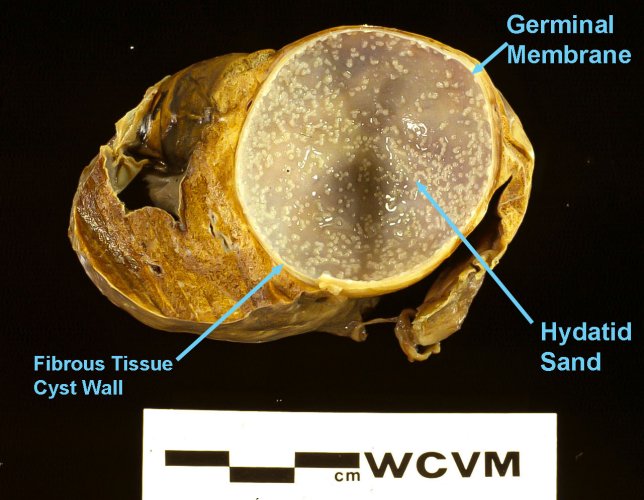Elkmagnet
Well-known member
I would like some opinions on this. I took my oldest out to help me fill an extra cow tag. We found an elk that was slow enough for me to catch. She was alone and from a distance looked to have a slight limp.
After the shot I first noticed she looked under weight and was old. No problem she's a good one to take out of the herd I thought. So I got to work.
Once skinned her backstraps were sunken in, her hip bones were poking out and she had 0 fat. I started to break her down. When I got to the ribs I started to see what was likely the real problem.
Her lungs had a lot of cysts that would flow cream dough nut filling when accidentally cut and both lungs had adhered to the rib cage (yellow arrows).
I had a bit of buyers remorse at this point and just finish up while snapping a few pictures.
My Google style research leads me to think tapeworm cysts or something more serious like bovine tuberculosis which would put me and my 9yo at risk during our redneck necropsy.
My questions are-
To those with an actual education in this area what does it look like to you?
Is it edible? I typically cook elk to 128 or 130 is that safe?
The informally educated are also welcome to jump in.
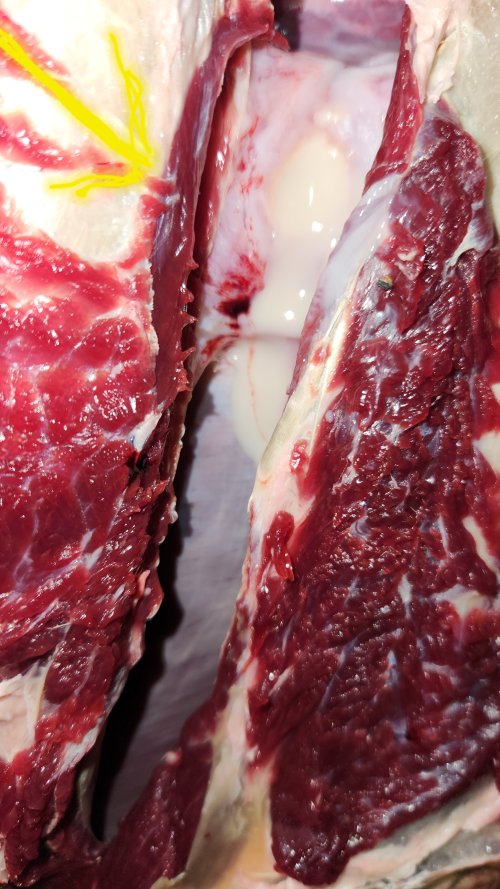
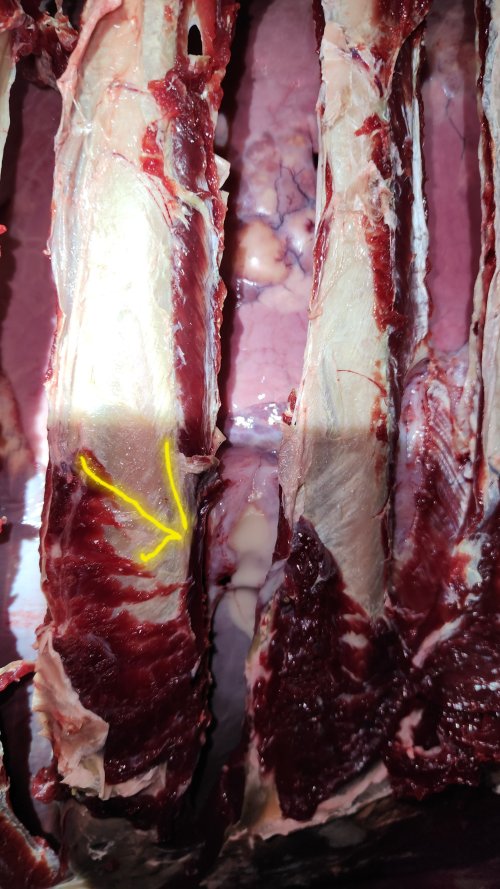
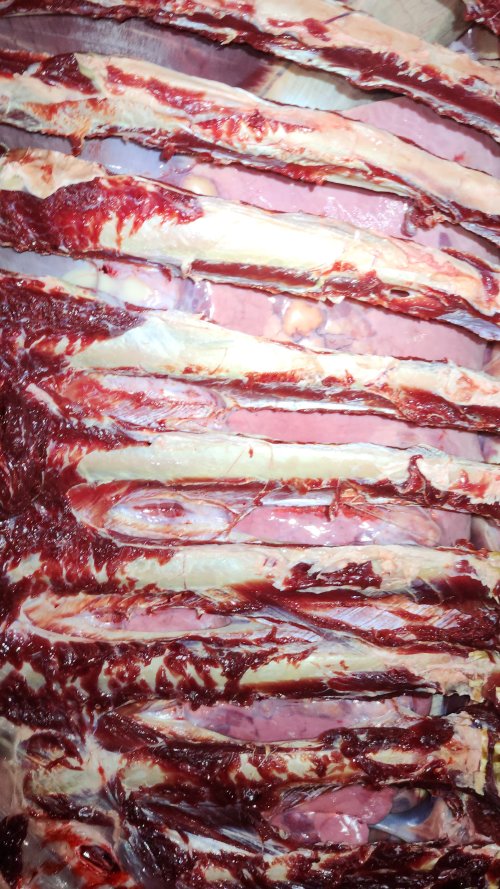
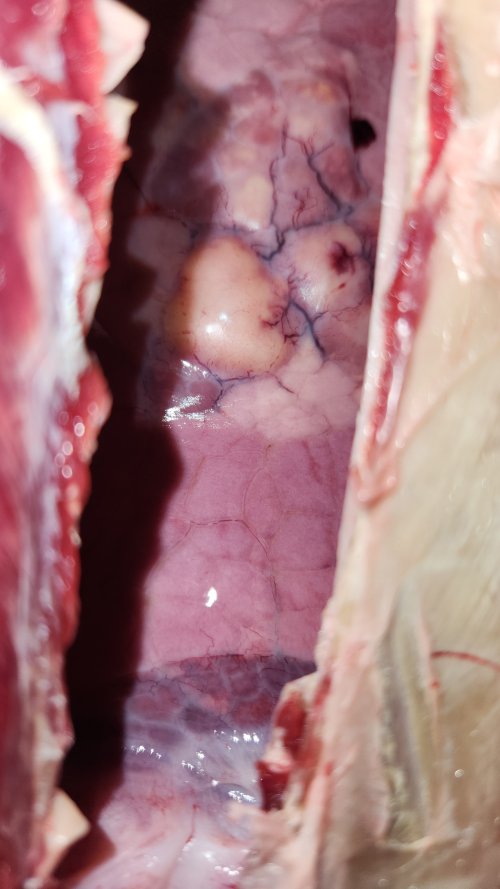
After the shot I first noticed she looked under weight and was old. No problem she's a good one to take out of the herd I thought. So I got to work.
Once skinned her backstraps were sunken in, her hip bones were poking out and she had 0 fat. I started to break her down. When I got to the ribs I started to see what was likely the real problem.
Her lungs had a lot of cysts that would flow cream dough nut filling when accidentally cut and both lungs had adhered to the rib cage (yellow arrows).
I had a bit of buyers remorse at this point and just finish up while snapping a few pictures.
My Google style research leads me to think tapeworm cysts or something more serious like bovine tuberculosis which would put me and my 9yo at risk during our redneck necropsy.
My questions are-
To those with an actual education in this area what does it look like to you?
Is it edible? I typically cook elk to 128 or 130 is that safe?
The informally educated are also welcome to jump in.









